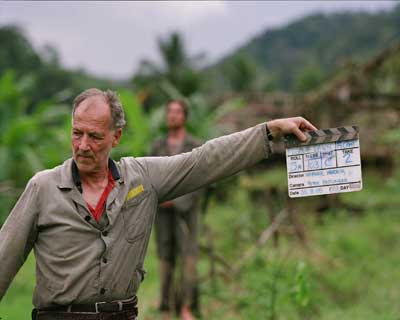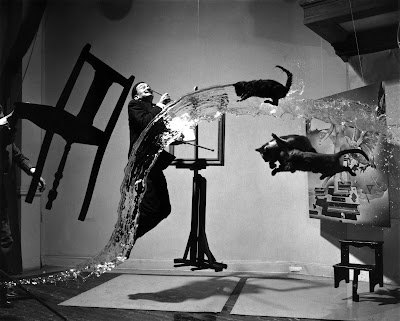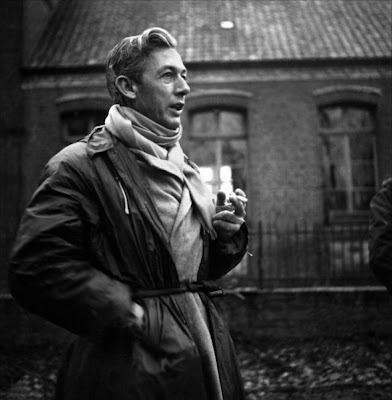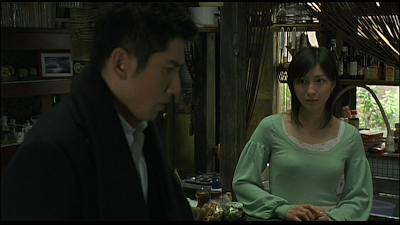A film by Werner Herzog
Year :1982
Country: Peru
Run time:158 mins
German with English subtitles
26th Dec 2010; 5.45pm
Perks Mini Theater
Perks School

Year :1982
Country: Peru
Run time:158 mins
German with English subtitles
26th Dec 2010; 5.45pm
Perks Mini Theater
Perks School

Werner Herzog's "Fitzcarraldo" is one of the great visions of the cinema, and one of the great follies. One would not have been possible without the other. This is a movie about an opera-loving madman who is determined to drag a boat overland from one river system to another. In making the film, Herzog was determined to actually do that, which is more than can be said for Brian Sweeney Fitzgerald, the Irishman whose story inspired him.
 "Fitzcarraldo" (1982) is one of those brave and epic films. Herzog could have used special effects for his scenes of the 360-ton boat being hauled up a muddy 40-degree slope in the jungle, but he believed we could tell the difference: "This is not a plastic boat."
"Fitzcarraldo" (1982) is one of those brave and epic films. Herzog could have used special effects for his scenes of the 360-ton boat being hauled up a muddy 40-degree slope in the jungle, but he believed we could tell the difference: "This is not a plastic boat."
 Watching the film, watching Fitzcarraldo (Klaus Kinski) raving in the jungle in his white suit and floppy panama hat, watching Indians operating a block-and-tackle system to drag the boat out of the muck, we're struck by the fact that this is actually happening, that this huge boat is inching its way onto land -- as Fitzcarraldo (who got his name because the locals could not pronounce "Fitzgerald") serenades the jungle with his scratchy old Caruso recordings.
Watching the film, watching Fitzcarraldo (Klaus Kinski) raving in the jungle in his white suit and floppy panama hat, watching Indians operating a block-and-tackle system to drag the boat out of the muck, we're struck by the fact that this is actually happening, that this huge boat is inching its way onto land -- as Fitzcarraldo (who got his name because the locals could not pronounce "Fitzgerald") serenades the jungle with his scratchy old Caruso recordings. Herzog turned to Klaus Kinski, the legendary wild man who had starred in his "Aguirre, the Wrath of God" (1972) and "Nosferatu" (1979). Kinski was a better choice for the role than Robards, for the same reason a real boat was better than a model: Robards would have been playing a madman, but to see Kinski is to be convinced of his ruling angers and demons.
Herzog turned to Klaus Kinski, the legendary wild man who had starred in his "Aguirre, the Wrath of God" (1972) and "Nosferatu" (1979). Kinski was a better choice for the role than Robards, for the same reason a real boat was better than a model: Robards would have been playing a madman, but to see Kinski is to be convinced of his ruling angers and demons. "Fitzcarraldo" opens on the note of madness, which it will sustain. Out of the dark void of the Amazon comes a boat, its motor dead, the shock-haired Kinski furiously rowing at the prow, while his mistress (Claudia Cardinale) watches anxiously behind him. They are late for the opera.
"Fitzcarraldo" opens on the note of madness, which it will sustain. Out of the dark void of the Amazon comes a boat, its motor dead, the shock-haired Kinski furiously rowing at the prow, while his mistress (Claudia Cardinale) watches anxiously behind him. They are late for the opera. Herzog has always been more fascinated by image than story, and here he sears his images into the film. He worked with indigenous Amazonian Indians, whose faces become one of the important elements of the work.
Herzog has always been more fascinated by image than story, and here he sears his images into the film. He worked with indigenous Amazonian Indians, whose faces become one of the important elements of the work. Among directors of the last four decades, has anyone created a more impassioned and adventurous career than Werner Herzog? Most people have only seen a few of his films, or none; he cannot be fully appreciated without a familiarity with his many documentaries and more obscure features (such as "Heart of Glass" and "Stroszek"). corrupted by the thin gruel of mass media.
Among directors of the last four decades, has anyone created a more impassioned and adventurous career than Werner Herzog? Most people have only seen a few of his films, or none; he cannot be fully appreciated without a familiarity with his many documentaries and more obscure features (such as "Heart of Glass" and "Stroszek"). corrupted by the thin gruel of mass media.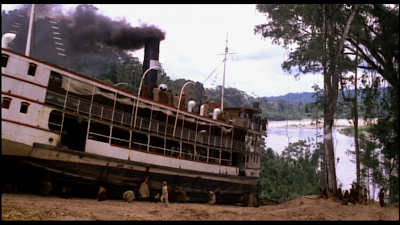 Again and again, in films shot in Africa, Australia, Southeast Asia and South America, he has been drawn to the farthest reaches of the earth and to the people who live there with their images uncorrupted by the thin gruel of mass media.
Again and again, in films shot in Africa, Australia, Southeast Asia and South America, he has been drawn to the farthest reaches of the earth and to the people who live there with their images uncorrupted by the thin gruel of mass media.( Source: Roger Ebert - http://rogerebert.suntimes.com)

One of the most influential filmmakers in New German Cinema and one of the most extreme personalities in film per se, larger-than-life Werner Herzog quickly gained recognition not only for creating some of the most fantastic narratives in the history of the medium, but for pushing himself and his crew to absurd and unprecedented lengths, again and again, in order to achieve the effects he demanded.
Werner Herzog (Werner Stipetic) was born Sept. 5, 1942 in Munich. He grew up on a farm in the Bavarian mountains. After his parents' divorce, Herzog and his mother moved to Munich where he attended High School (graduated in 1961). He travelled through Jugoslavia and Greece, worked in Manchester and - fact or fiction? - as a rodeo rider. At the age of 16 he converted to catholicism.
Werner Herzog (Werner Stipetic) was born Sept. 5, 1942 in Munich. He grew up on a farm in the Bavarian mountains. After his parents' divorce, Herzog and his mother moved to Munich where he attended High School (graduated in 1961). He travelled through Jugoslavia and Greece, worked in Manchester and - fact or fiction? - as a rodeo rider. At the age of 16 he converted to catholicism.
 In 1974, he walked from Munich to Paris to see the sick Lotte Eisner. He wrote a dairy about his pilgrimage entitled Vom Gehen im Eis (Walking on Ice) for which he received a literary award (Rausirer Literaturpreis) in 1979. He said that when he was 14 years old, he knew that he would be making films. His first short was completed in 1962 (Herakles) and one year later he founded his own production company.
In 1974, he walked from Munich to Paris to see the sick Lotte Eisner. He wrote a dairy about his pilgrimage entitled Vom Gehen im Eis (Walking on Ice) for which he received a literary award (Rausirer Literaturpreis) in 1979. He said that when he was 14 years old, he knew that he would be making films. His first short was completed in 1962 (Herakles) and one year later he founded his own production company.Herzog studied history, literature and drama in Munich and Pittsburgh (Fulbright) but not for very long. He never attended a film school and had no formal film education. 1964 he won the Carl Mayer Prize for the screenplay that was to become his first feature film, Signs of Life (Lebenszeichen), which was financed by the Kuratorium Junger Deutscher Film (300.000DM) and won the Bundesfilmpreis for best first feature.
Among Herzog's most popular films, though not an immediate success, was Aguirre: The Wrath of God (1972) with Klaus Kinski, who also starred in Nosferatu (1979),Woyzeck (1979), Fitzcarraldo (1982), and Cobra Verde (1987). One of his biggest successes was Every Man for Himself and God Against All / The Mystery (Enigma) of Kaspar Hauser (1974), which won the Special Award in Cannes (1975) and several Federal Film Prizes (1975).
Herzog is famous for dealing with marginalized figures and for his choice of 'exotic' sets (Peru, Brazil, Australia). Herzog, the "visionary" of the NGC, insists that "film is not the art of scholars, but of illiterates."
In recent years, Herzog released a number of documentaries and directed various operas. His latest feature film is Invincible. He lives in Munich and Los Angeles.
